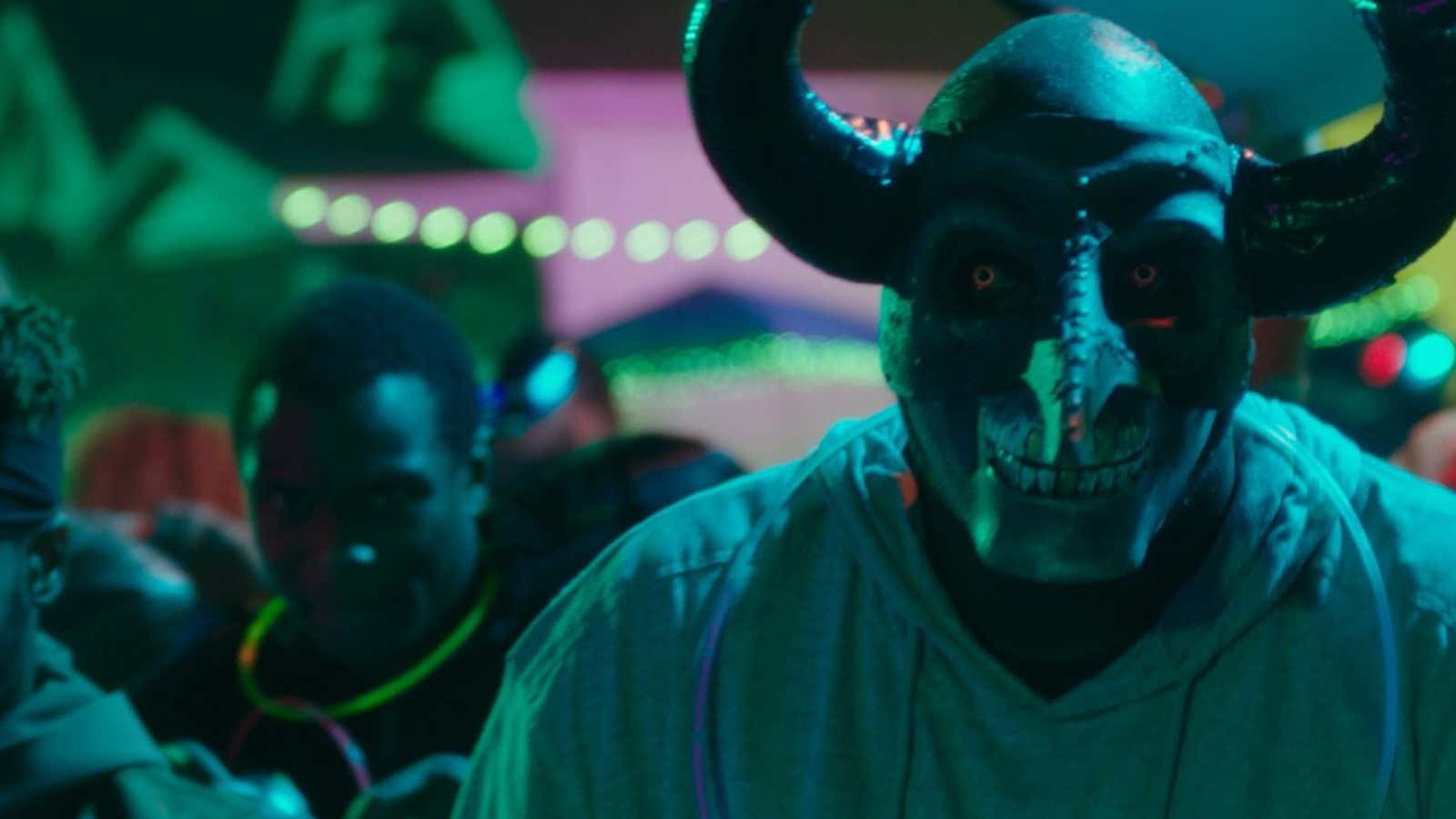Staten Island, New York
In the shadow of Manhattan’s skyscrapers, upon New York Bay, floats the least populated and most disconnected of New York City’s five boroughs, Staten Island. It doesn’t have Manhattan’s status, Brooklyn’s swagger, Queens’s culture, or the Bronx’s grit. Many New York transplants and tourists don’t even bother visiting “the forgotten borough,” as some residents call it.
Bridges connect this suburban borough of blue-collar workers and middle-class families to the urban sprawl of neighboring Brooklyn and the shores of New Jersey. Boats ferry residents to bustling Manhattan.
Both transports can swiftly be shut down, making Staten Island the perfect place for an experiment like the Purge.
In the Blumhouse and Universal Pictures film franchise, Staten Island is where the dark tradition is born. For the uninitiated, the Purge theorizes that humans are violent by nature. One night a year, all crime in the US is made legal, so citizens can purge their inhibitions for the good of the nation.
The fourth film in the dystopian horror franchise, due out in US theaters on July 4, explores the origins of the tradition. It centers on the psychologist, played by Marisa Tomei, who developed the experiment after analyzing centuries of human behavior. The people of Staten Island serve as its test subjects.
James DeMonaco, the writer and creator of the film franchise, knows the borough intimately: he lives there. But there are other reasons to set the film on Staten Island.
As an island, its geography is ideal for a controlled social experiment like the Purge. ”You want to keep it locked up,” producer Sébastien Lemercier told Quartz. “You don’t want it to spread without control.”
The are two ways on or off Staten Island—one of its four steel bridges or a boat like the Staten Island Ferry. In the film, the bridges are shut down to prevent passage. ”We always imagine there are boats around it” to block people from leaving by water, Lemercier added, though the film does not depict that.
The film is set primarily in Park Hill, a pre-dominantly black neighborhood on the North Shore of Staten Island with growing Asian and Hispanic communities. It’s one of the more diverse neighborhoods on the island, which is majority white and has one of the highest median household incomes and lowest shares of people in poverty of the five boroughs. The film doesn’t dive into the socioeconomic dynamics of Staten Island. But it uses the remote island to make a broader commentary on class.
As with other films in the franchise, The First Purge explores social and racial tensions. The wealthy who can afford protection watch the purge from the safety of their carefully guarded homes. Everyone else is left to fend for themselves. The First Purge focuses on the people living in New York City housing projects versus those looming in Manhattan high rises. “We always liked the visual of it being so close to Manhattan,” said Lemercier. “You can imagine that the wealthy and well off in Manhattan can look out of their windows and at their TVs at the experiment that is occurring very close to them but far enough for them to be safe.”
Some Staten Island residents seek shelter in nearby Brooklyn, New Jersey, and elsewhere before the purge begins. The organizers—the dystopian political party, the New Founding Fathers of America—offer people $5,000 to stay and even more to engage in violent acts. That’s a lot of money to someone struggling to pay rent or feed their family.
“You get different answers depending on who you ask in The First Purge,” said Blumhouse producer Jason Blum, in a statement about why the film was set on Staten Island. ”The Founding Fathers would say because it’s a contained island in a big city. But the real reason is because they have this secret agenda, which is really a class war and they’re having poor people kill each other.”
Those who remain on Staten Island are given tracking devices and participants wear contact lenses that record their experiences.
Without giving too much away, the experiment doesn’t go as planned. Rather than brutalize and degrade one another, the strongest among them come together to defend their neighborhood. Others throw parties to lighten the mood. The Founding Fathers, eager to prove their theory, stir things up.
Whether intentional or not, the movie hits on an us-against-them mentality common among many Staten Islanders. Residents sometimes call it “the forgotten borough,” because they feel neglected by city government. In the 1980s and early 1990s, there was a movement to secede from New York City. People from Staten Island are strong-willed, they’re proud, they have a sense of community, and they’re used to taking care of themselves. They stood together in New York’s hardest moments, like 9/11 and Superstorm Sandy. The purge is another such instance, in fiction.
The First Purge is part of a series about America, society, and class—not Staten Island—but it finds its most fitting backdrop in the forgotten borough.
